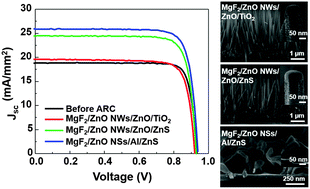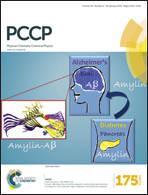Optical design of ZnO-based antireflective layers for enhanced GaAs solar cell performance†
Abstract
A series of hierarchical ZnO-based antireflection coatings with different nanostructures (nanowires and nanosheets) is prepared hydrothermally, followed by means of RF sputtering of MgF2 layers for coaxial nanostructures. Structural analysis showed that both ZnO had a highly preferred orientation along the 〈0001〉 direction with a highly crystalline MgF2 shell coated uniformly. However, a small amount of Al was present in nanosheets, originating from Al diffusion from the Al seed layer, resulting in an increase of the optical bandgap. Compared with the nanosheet-based antireflection coatings, the nanowire-based ones exhibited a significantly lower reflectance (∼2%) in ultraviolet and visible light wavelength regions. In particular, they showed perfect light absorption at wavelength less than approximately 400 nm. However, a GaAs single junction solar cell with nanosheet-based antireflection coatings showed the largest enhancement (43.9%) in power conversion efficiency. These results show that the increase of the optical bandgap of the nanosheets by the incorporation of Al atoms allows more photons enter the active region of the solar cell, improving the performance.


 Please wait while we load your content...
Please wait while we load your content...